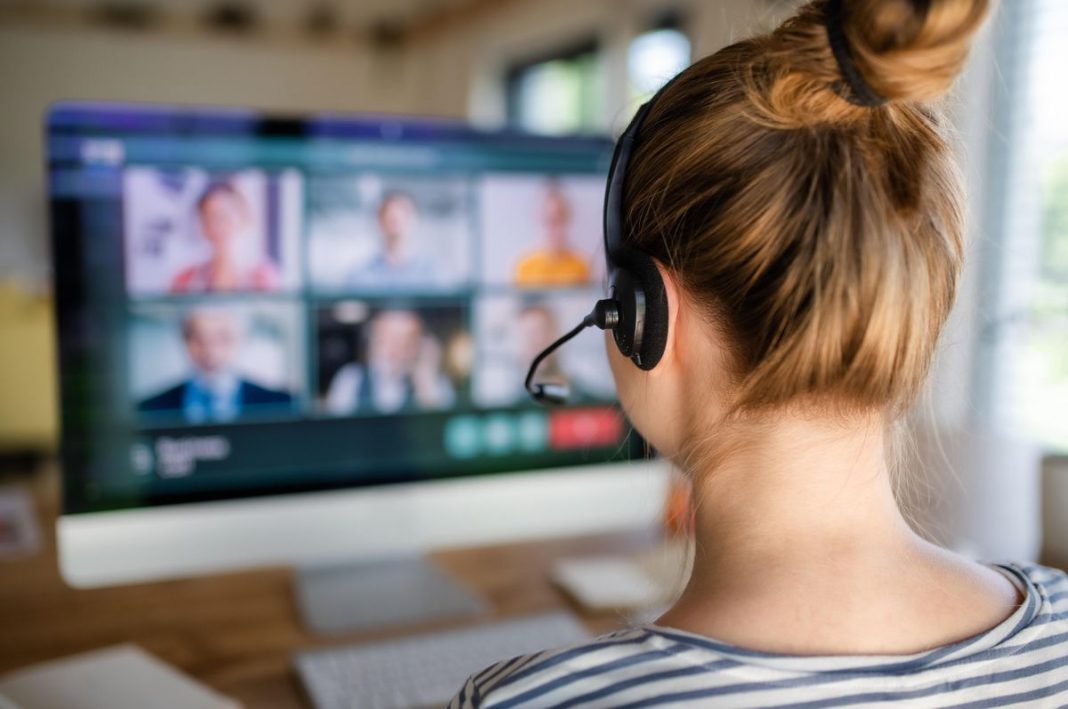
Does Zoom Affect Women’s Body Self-Image?
getty
Since the Covid-19 pandemic spread throughout the world in March 2020, professional life has become a whole lot more virtual than it previously was, as social distancing measures and similar restrictions to our activities have meant remote working has mushroomed. As such, the meetings that formed such a central part of working life have largely been performed via platforms like Zoom for the past year.
Of course, this virtualization of life has had implications in the past, with the rise in social media causing significant self-image problems as people resort to filters, photo-editing, and highly choreographed selfies to project a stylized image of themselves online.
With Body Dysmorphic Disorder believed to affect as many as 1 in 50 people, being forced to view footage of ourselves in Zoom meetings may cause many to focus more on how they’re presented than on the contents of the meeting itself.
In the spotlight
New research from Washington University in St. Louis explores how Zoom is affecting our satisfaction with our appearance. Does the fact that we’re forced to confront an image of ourselves for prolonged periods alter our self-perception?
The study, which focused its attention primarily on women, hypothesized that such prolonged exposure would result in a general feeling of diminished satisfaction with our appearance as our video conferencing usage went up.
The researchers decided to focus on women as women are more likely to report issues with body image than men. They spoke to 438 professional women aged between 18 and 70, with 95% of the cohort aged below 55.
Each of the volunteers reported the amount of time they spent on video calls before the pandemic and then again as the increase in remote working unfolded during the pandemic. They also shared the people they were calling, including family and friends as well as colleagues, as well as sharing various habits related to video calls.
Self-image
The volunteers were then assessed to determine their self-objectification level. This explores how conscious we are about the perceptions other people have of us. The participants were also tested to understand how frequently they compared their own appearance to others, before also exploring how satisfied they were with their own appearance.
This gave the researchers a good idea of whether the video call usage had altered the body-image satisfaction levels of the women, and especially for those who had a tendency to judge their own appearance against that of others.
“The percentage of time one spent looking at oneself during video chatting was positively associated with self-objectification, video chatting appearance comparison, total video chatting hours, and work/school hours,” the researchers explain. “Furthermore, using hide self-view and “touch up” features were positively associated with video chatting appearance comparison.”
Marginal impact
Positively, however, this association was largely a marginal one, with the amount of time spent on video calls not strongly linked with our satisfaction with our appearance, especially among people for whom self-objectification was not a major issue.
“Counter to expectations, daily video chatting hours was unassociated with appearance satisfaction, which aligns with some work that suggests the specific social media activities, rather than the total time spent using it, predicts body dissatisfaction,” the researchers continue. “Furthermore, daily video chatting hours was not associated with self-objectification or video chatting appearance comparisons, though self-objectification moderated the relationship between total video chatting hours and both satisfaction measures.”
Even a small increase can have a significant impact, however, especially as the pandemic has seen video conferencing not only used to engage with friends, family, and colleagues but also with the medical profession as telehealth usage has boomed.
Virtual life
It’s obviously not entirely clear how much of our predominantly virtual life will return to a semblance of normality once the social restrictions are eased, but if video calling maintains its current level then this is likely to be a topic for further analysis.
“Given how people have adapted to life during the COVID19 pandemic, video chatting will likely be a prominent outlet for individuals to conduct business, receive an education, and interact with loved ones even after the pandemic eases,” the researchers conclude. “Therefore, continued examination of the effects of video chatting on appearance satisfaction and eating pathology is paramount.”
There is much about this “new normal” that we’re adapting to on the fly, and while body image issues are perhaps not at the forefront of manager’s priorities, it is perhaps something to be mindful of, especially when placed alongside other concerns about how we are presenting ourselves during these video calls given the intensely personal glimpse they give into our homes.
The researchers plan to continue their work, both in terms of exploring how the situation looks from the male perspective while also providing a deeper dive into women’s perspectives in future research. They’re especially keen to understand whether our perspectives on virtual life have changed having lived under it for so long now. When they conducted the study we had been virtual for just a few months, and the novelty may be wearing off. You sense it’s a similar case of learning as we go for us all right now.




